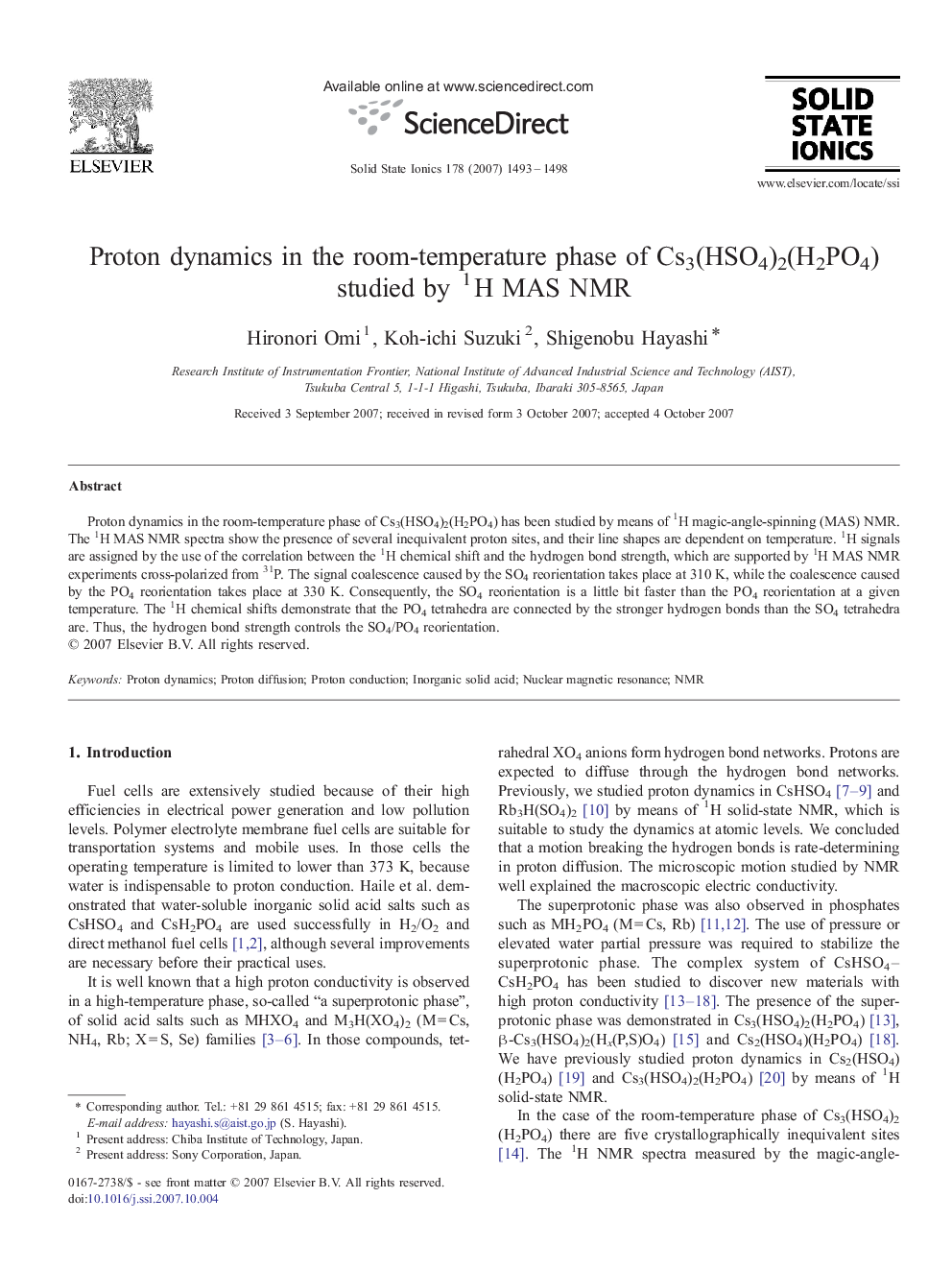| Article ID | Journal | Published Year | Pages | File Type |
|---|---|---|---|---|
| 1298238 | Solid State Ionics | 2007 | 6 Pages |
Proton dynamics in the room-temperature phase of Cs3(HSO4)2(H2PO4) has been studied by means of 1H magic-angle-spinning (MAS) NMR. The 1H MAS NMR spectra show the presence of several inequivalent proton sites, and their line shapes are dependent on temperature. 1H signals are assigned by the use of the correlation between the 1H chemical shift and the hydrogen bond strength, which are supported by 1H MAS NMR experiments cross-polarized from 31P. The signal coalescence caused by the SO4 reorientation takes place at 310 K, while the coalescence caused by the PO4 reorientation takes place at 330 K. Consequently, the SO4 reorientation is a little bit faster than the PO4 reorientation at a given temperature. The 1H chemical shifts demonstrate that the PO4 tetrahedra are connected by the stronger hydrogen bonds than the SO4 tetrahedra are. Thus, the hydrogen bond strength controls the SO4/PO4 reorientation.
